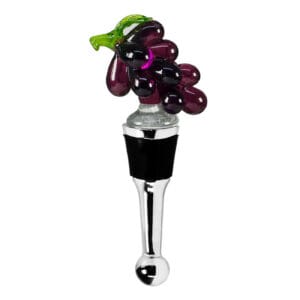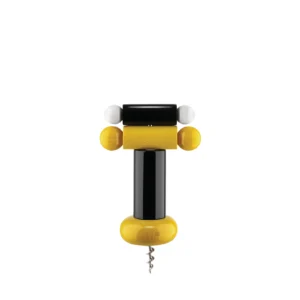Tannins are natural compounds in wine that create a dry, astringent sensation in the mouth. They are primarily found in red wines, where they are derived from the skins, seeds, and stems of grapes. These substances give wine structure, complexity, and help it age. Dutch wines also contain tannins, especially red varieties and orange wines made with skin contact.
What exactly are tannins and where do they come from?
Tannins are polyphenols – natural plant compounds found primarily in grape skins, seeds, and stems. These compounds are released during the winemaking process when the grapes remain in contact with their skins. Red wines therefore contain significantly more tannins than white wines, because the skins of red wines soak longer during fermentation.
The chemical structure of tannins causes them to bind with proteins in your saliva. This explains why your mouth feels dry when drinking tannic wines. Tannins don't only come from grapes Oak aging also adds tannins to wine. Dutch winemakers consciously use this knowledge to create complex wines.
In orange wines, such as the Dutch Oranje Blanje from Wijngoed Gelders Laren, tannins are created by fermenting white grapes with their skins. This gives these special wines their characteristic structure and soft tannins that perfectly match the Dutch terroir.
How do you recognize tannins when tasting wine?
Tannins are instantly recognizable by the dry, astringent sensation they leave in your mouth. It feels as if moisture is being drawn from your mouth, especially on your tongue, gums, and the insides of your cheeks. This astringent sensation is similar to what you experience when drinking strong black tea.
The texture of tannins can range from soft and velvety to rough and coarse-grained. When tasting Dutch wines, you'll notice that younger wines often have firmer, more prominent tannins. As the wine ages, these tannins soften and become more integrated.
In order to properly identify tannins during a wine tastingTake a sip of wine and let it roll around in your mouth. Notice the dryness that remains after you swallow. The intensity of this feeling tells you how many tannins the wine contains.
Why are tannins important for wine quality?
Tannins form the backbone of a good wine, adding structure and complexity. They act as natural antioxidants that protect the wine from oxidation, allowing it to age longer. This is especially important for Dutch quality wines intended to age for several years.
The balance between tannins, acidity, and fruit largely determines a wine's quality. Too many tannins make a wine harsh and inaccessible, while too few result in a wine lacking structure. Dutch winemakers therefore pay close attention to the optimal tannin content during the production process.
During the aging process, tannins undergo polymerization, bonding and softening. This explains why older wines often have a silky texture. For Dutch wines with sufficient tannins, this means they can evolve beautifully in the bottle.
Which Dutch wines have noticeable tannins?
Dutch red wines made from grapes like Regent, Pinot Noir, and Acolon are known for their noticeable tannin levels. These grape varieties were specifically developed to thrive in the Dutch climate and produce wines with good structure. The cooler temperatures in the Netherlands allow for slower ripening, resulting in elegant tannins.
Orange wines are a special category within Dutch wine production. These wines, such as the aforementioned Oranje Blanje, are made by vinifying white grapes with skin contact. This results in wines with soft but present tannins which go perfectly with oily dishes.
Dutch wine regions in Gelderland, Limburg, and Brabant are increasingly producing wines with distinctive tannins. Winemakers are experimenting with various vinification techniques to influence tannin content, such as longer skin maceration and oak aging. This results in unique Dutch wines whose structure rivals international examples.
How does food affect the perception of tannins in wine?
Food has a significant impact on how you experience tannins. Proteins and fats in dishes bind with tannins, making the wine feel softer in your mouth. This explains why a full-bodied red wine pairs perfectly with a steak – the meat softens the tannins while the wine enhances the flavor of the dish.
Dutch tannin-rich wines combine perfectly with local dishes. An orange wine with its firm tannins and bitters It pairs beautifully with grilled vegetables, hummus, or pasta with fresh pesto. The oils in these dishes perfectly balance the dryness of the tannins.
When pairing Dutch wines with food, it's important to match the tannin intensity to the dish. Soft cheeses and delicate fish dishes require wines with subtle tannins, while grilled lamb chops or steak tartare pair perfectly with wines that have more structure. Avoid sweet dishes with tannic wines, as the sweetness will disrupt the balance.
Understanding tannins opens up a whole new world of wine experience. Whether you're tasting a Dutch red wine or experimenting with an orange wine, knowing about tannins will help you enjoy it more consciously. At Design & Wijn, you'll discover how different Dutch wines vary in tannin content during a wine tasting and which ones best suit your taste.



